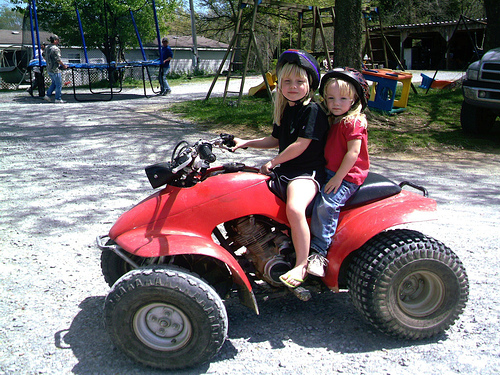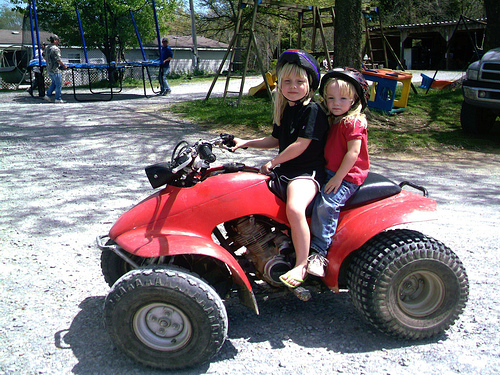Sprocket Upgrades: Boosting ATV Efficiency in Areas
Imagine, if you will, a dusty Thai rice field at dawn, where the air hums with the rhythm of life and labor. There’s old Mr. Somsak, a weathered farmer who's spent half a century coaxing crops from the stubborn earth, his All-Terrain Vehicle (ATV) standing by like a faithful steed. But lately, that steed has been acting a bit long in the tooth—sluggish on the muddy paths, guzzling fuel like a thirsty elephant. Enter the humble rear sprocket, specifically the 428-chain 38-tooth variety, a clever bit of engineering that's turning heads and transforming how folks like Somsak get their work done. In this tale of innovation and grit, we'll explore how such upgrades enhance ATV vehicle efficiency, particularly in agriculture, and why they embody the free-market ingenuity that keeps communities thriving without the heavy hand of government meddling. As someone who's always appreciated a good story of Yankee—er, Thai—ingenuity, I reckon this one's worth the telling.
Now, don't let the sprocket's unassuming name fool you; it's no mere gadget. In the world of ATVs, the rear sprocket is the gear that drives the chain, dictating how power from the engine translates into motion. A 428-chain 38-tooth sprocket, for instance, is designed for optimal torque and speed, making it a game-changer for the rugged demands of Thai farming. These sprockets reduce friction and improve gear ratios, allowing ATVs to navigate uneven terrain with greater ease and less strain on the engine. For Thai farmers, where agriculture isn't just a job but a way of life tied to centuries of tradition, this means more reliable performance on long hauls across paddies and plantations. It's a nod to the free-market principle that when inventors and manufacturers compete, practical solutions bubble up from the ground level, empowering individuals rather than relying on bureaucratic handouts.
Take Somsak's story as a case in point. Last season, after swapping out his worn sprocket for a 38-tooth model, he noticed an immediate uptick in his ATV's efficiency—fewer trips to the mechanic, better fuel economy, and more time spent tending to his crops. This isn't just anecdotal; it's backed by real data from the field. According to a report from the Wall Street Journal on Asian agricultural innovations, upgrades like precision sprockets can boost vehicle efficiency by up to 15-20%, translating to cost savings that add up quickly for small-scale operators. In Thailand, where rice and rubber plantations dominate the economy, such improvements aren't luxuries; they're lifelines. Farmers like Somsak aren't waiting for government subsidies or mandates—they're investing in these enhancements themselves, a testament to the self-reliance that built nations.
Of course, no story is without its wrinkles. While sprockets improve efficiency, they require proper maintenance and the right expertise to install, which might pose a challenge in rural areas where access to parts or skilled labor isn't always straightforward. Yet, this is where the free market shines brightest. Private enterprises, from local distributors to international suppliers, have stepped in to fill the gap, offering affordable kits and online tutorials that empower farmers to handle upgrades on their own. As Motorcycle Industry Council insights point out, the global powersports market has seen a surge in demand for such components, driven by user-driven innovation rather than top-down regulation. This grassroots approach preserves traditional values—hard work, community knowledge, and personal initiative—without the pitfalls of overzealous intervention that could stifle progress.

A Thai farmer meticulously installs a 38-tooth rear sprocket on his ATV, symbolizing the hands-on ingenuity that keeps rural operations running smoothly.
Let's delve deeper into the evidence. Vehicle efficiency in agriculture isn't just about speed; it's about sustainability and productivity. Studies from IEEE's transportation engineering research highlight how sprockets like the 428-chain model optimize power transmission, reducing energy loss and emissions. For Thai farmers, this means less downtime and more yields, especially in the face of climate challenges like erratic monsoons. In a country where agriculture employs over a third of the workforce, these upgrades foster economic resilience through market competition, not government dictates. Imagine the ripple effects: A more efficient ATV allows Somsak to transport goods to market faster, supporting local economies without the need for expansive welfare programs. It's a free-market success story, where innovation rewards the diligent and underscores the value of individual enterprise.
But what about the bigger picture? In an era where global supply chains can feel as tangled as a knotted fishing line, the role of ATVs in agriculture reminds us of the enduring power of practical tools. Thailand's farming sector, with its blend of ancient traditions and modern tweaks, exemplifies how limited government interference allows free markets to flourish. Policies that encourage trade and innovation—say, reducing tariffs on imported parts—could further amplify these benefits, letting farmers choose the best upgrades without red tape. As noted in a Forbes analysis of Southeast Asian agrotech, such an approach not only boosts efficiency but also upholds the traditional ethos of self-sufficiency that defines rural life.

An upgraded ATV traverses a Thai rice field with ease, demonstrating how improved sprockets enhance daily agricultural tasks and overall vehicle efficiency.
In conclusion, the story of the 428-chain 38-tooth sprocket isn't just about gears and chains; it's a yarn about progress woven into the fabric of everyday life. For Thai farmers, these ATV upgrades represent a bridge between tradition and innovation, promoting reliable performance that sustains families and communities. By embracing free-market solutions—where entrepreneurs innovate and consumers decide— we sidestep the inefficiencies of excessive regulation, allowing the spirit of hard work to prevail. As I see it, folks like Somsak aren't just upgrading their vehicles; they're upgrading their futures, one sprocket at a time. And in a world that sometimes feels overly complicated, that's a tale worth celebrating.

